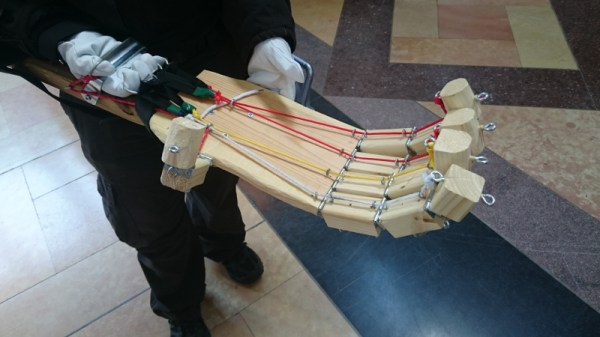There is always a great variety of things to see and experience at the Kansas City Maker Faire. This is the fifth year for the event which is held at historic Union Station, a beautiful art deco train depot from a bygone era. With a multitude of booths and exhibits across two floors and a vast outdoor area, there is something for pretty much everyone. Often times, the interesting things are mobile conversation-starting creations. When we saw [Dan] walking around with a giant wooden contraption on his arm, we knew we must find out more about it.
The impetus for [Dan]’s project was his desire to pick up a soda can using a mechanical grip. He now believes this to have been a lofty goal, given the weight of a full can of the stuff. This prosthetic hand is made from wooden finger segments that are connected by small, continuous hinges. Each of [Dan]’s gloved fingers curls around a metal ring to control that digit’s large wooden analog. On the inside of the hand, sections of paracord run underneath strategically placed eye bolts on each finger segment and are tied off at the fingertips. A second set of eye bolts on the back of the hand anchor the network of rubber bands that provide resistance. Although he made it look easy to open and close the hand, [Dan] said that it’s pretty heavy to lug around and somewhat strenuous to use. Next time, he’ll probably go with foam or 3D-printed pieces.












